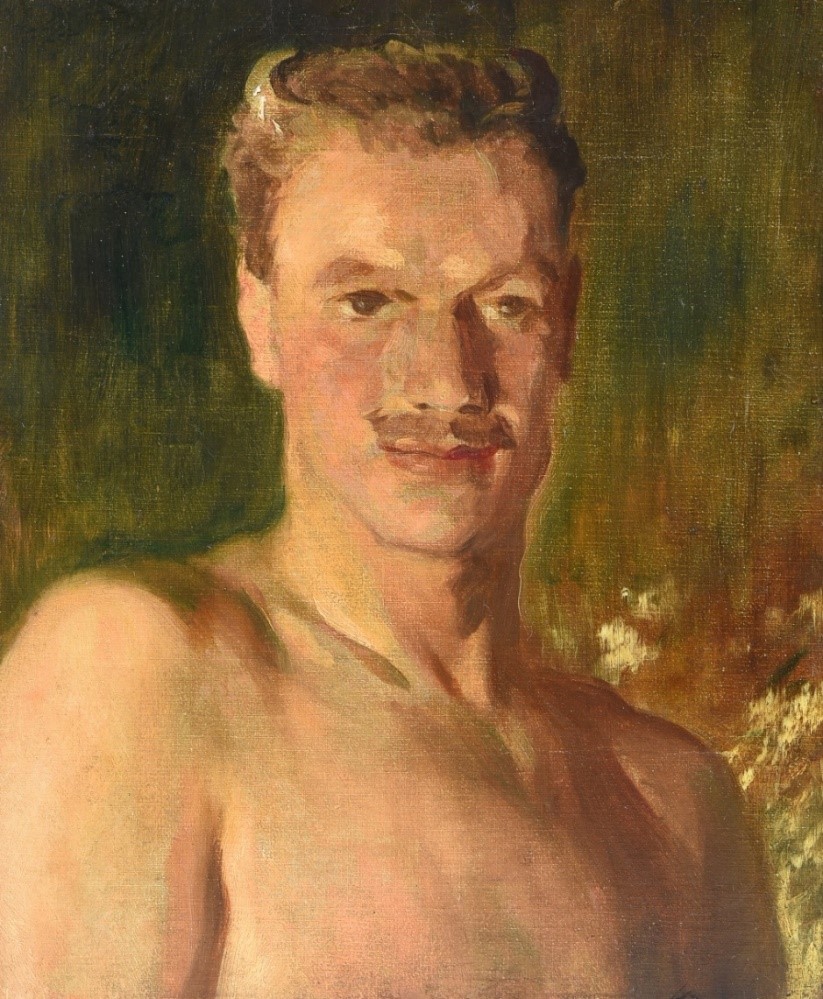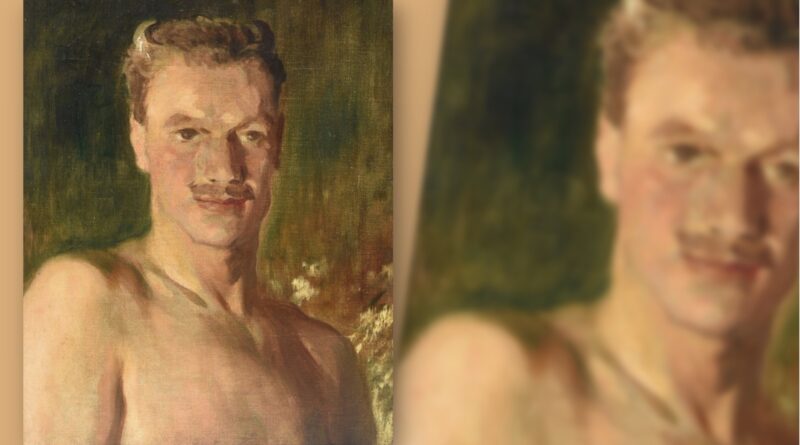Unique Robert Allerton portrait in sale
A unique portrait of the American philanthropist and art collector Robert Allerton (1873-1964) as he’s never been seen before, is set to head to auction. The painting by the great portrait artist Glyn Warren Philpot (1884-1937) depicts the well-known Chicago entrepreneur as a mythical faun (a half-man, half-animal mythological creature from Greek and Roman mythology), rather than in his typical pose as a professional figure.
From 1920 Robert Allerton began donating artworks to the Art Institute of Chicago, including pieces by the greats, such as Vincent Van Gogh, Pablo Picasso and Auguste Rodin. By the time of his death in 1964 he had donated 6,600 pieces, making him one of the most important benefactors in its history. Allerton also gifted his house, grounds and farmland to the University of Illinois, to be used as an education and research centre.

Francesca Whitham Picture Specialist at Dreweatts, said: “It is a beautifully mesmerising portrait that truly provides an intimate insight into the close relationship between celebrated British artist Glyn Philpot and American philanthropist Robert Allerton.”
Allerton was the son of Samuel Walters Allerton (1828-1914), who made his fortune through the livestock trade in Chicago and was co-founder of the First National Bank of Chicago. Allerton junior developed an early passion for the arts and rather than follow in his father’s footsteps he went to study at the Royal Academy of Fine Arts in

Munich and then Paris. However, after five years he abandoned his artistic ambition and returned home to Illinois to run the family’s 12,000-acre agricultural estate, known as ‘The Farms’. This was a pioneering farm equipped with the latest farming machinery and a highly successful business model, which allowed for mass production. Its reputation attracted experts from around the world to study its techniques.
Allerton at the time is quoted as saying: “One of the enjoyable things about being a farmer is that much of the work can be done in the summer and the winter can be devoted to travel.” He took full advantage of this and travelled extensively across Europe and Asia to buy artworks to add to ‘The Farms’ art collection. As a firm fixture in Chicago society there was a lot of interest in his personal life and in 1906 the Chicago Tribune published an article about him titled the ‘Richest Batchelor in Chicago’.
Following a trip to London, Allerton built a Georgian mansion on the family estate in the style of Ham House (in Richmond, Surrey, UK). Here he would entertain friends, artists and notable people from Chicago’s high society, as well as creatives from around the world. It was an invitation to the US, to the celebrated British artist Glyn Warren Philpot (1884-1937) in 1913 that resulted in this particular painting, which was a study for a later full-scale portrait that Philpot would create on a separate visit to Allerton. Philpot had met Allerton on an opera visit, as the artist was experimenting with the subject of ‘the faun’ and had created a portrait of the ballet dancer Vaslav Nijinsky who was performing L’Apres-midi d’un faune with the Ballet Russes at the Royal Opera House.
Philpot’s reputation was already established as a painter and sculptor, most famously known for his portraits of well-known figures at the time, such as the poet Siegfried Sassoon. His trip to visit Allerton was a great success, with a small studio having been set up for him and his painting extended to portraits of Allerton’s friends, family and members of Chicago society, such as the distinguished Isabelle McBirney. Philpot’s arrival caught the attention of ‘Madame X’ who wrote for the Chicago Sunday Times. The paper published an article on 21st September 1913, which dubbed the artist, ‘the art sensation of the moment’ and underpinned his highly regarded reputation back in England.
Dreweatts said that the portrait offered in their sale is a very sensitive and intimate portrayal of Allerton, which is strikingly different from all other known portraits and photographs of him, where he was usually presented dressed in a smart suit and suitably posed and professional. This shirtless portrait shows off his muscular shoulders and presents a very relaxed side to his character, someone who enjoyed walking naked in the grounds of his home, unincumbered by the restraints of society. Allerton was generally a quiet and kind character and very much an introvert, who socialised with a small group of close friends and therefore the total opposite of the mischievous characters of ‘the fauns’ from mythology.
Such was Philpot’s popularity that he stayed for four months on his first painting trip, creating another portrait of Allerton titled The Man in Black (which is now in the Tate Collection, London, UK). He would return in 1921 to create the full-scale version of this work, which was titled: ‘Faun and Satyr’, which was hung above the over-mantel, as well as producing portraits for others by request. Unfortunately, the large-scale work was moved to Allerton’s estate in Kauai, Hawaii and was later destroyed in a hurricane. The present work, a study for this main work, will be offered in Dreweatts Modern and Contemporary Art sale on March 15 and carries an estimate of £15,000-£20,000.


